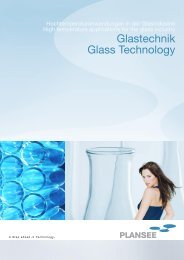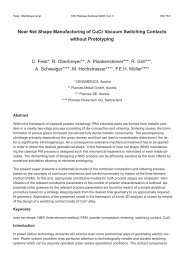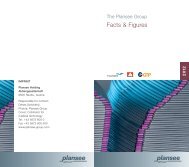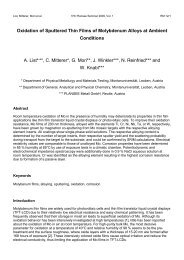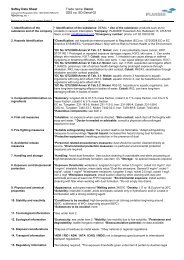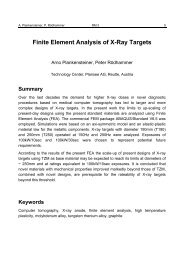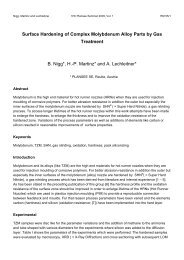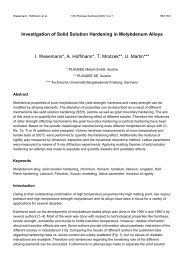PROPERTIES OF THE SIBOR® OXIDATION PROTECTIVE - Plansee
PROPERTIES OF THE SIBOR® OXIDATION PROTECTIVE - Plansee
PROPERTIES OF THE SIBOR® OXIDATION PROTECTIVE - Plansee
Create successful ePaper yourself
Turn your PDF publications into a flip-book with our unique Google optimized e-Paper software.
H.P. Martinz et al. RM 7 81<br />
Fig.23: LiMi of a cross section of sample 7 (after 168 h; left); SEM/BS of the same<br />
sample (right), EDX: all points show only Mo, but zone 3 (arrow) contains<br />
most probably B, which is not detectable.<br />
Conclusively SIBOR on Mo was not dissolved completely in opal glass within one<br />
week. However, the remaining porous Mo “skeleton” is Si free, only below in the<br />
substrate rests of a – presumably B containing – diffusion zone could be found. This -<br />
compared to soda lime glass – more advanced dissolution state is most probably<br />
caused by the high alkali fluoride content and is in agreement with practical<br />
experience.<br />
3.4.3 BOROSILICATE GLASS<br />
For the borosilicate glass dissolution experiments a typical commercial laboratory glass<br />
cullet with the composition 81 % SiO2, 13 % B2O3, 4 % Na(K)2O and 2 % Al2O3 (wt %)<br />
was molten and kept at 1450°C. In this series SIBOR coated Mo samples were used,<br />
after being pre-oxidized by air ramp oxidation at 1450°C and dwelling for 24 hours.<br />
Fig.24: Macros of samples and cullet of numbers 1, 3, 5 and 7 (from left) after 24,<br />
72, 120 and 168 hours respectively



